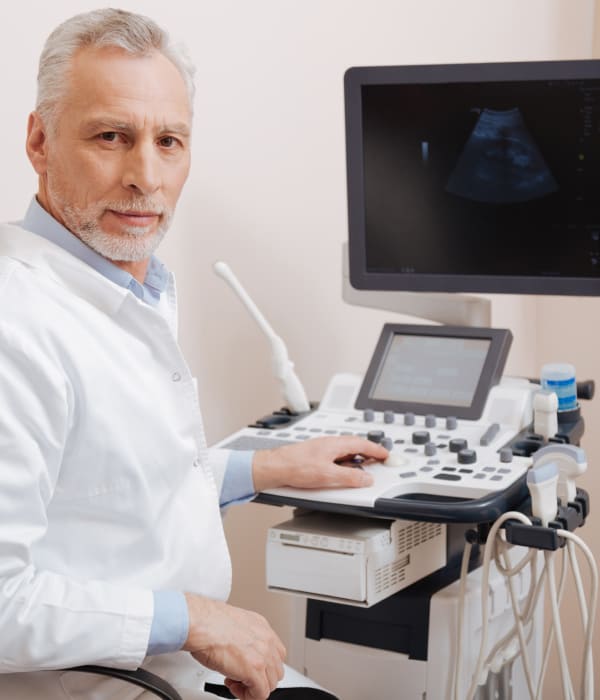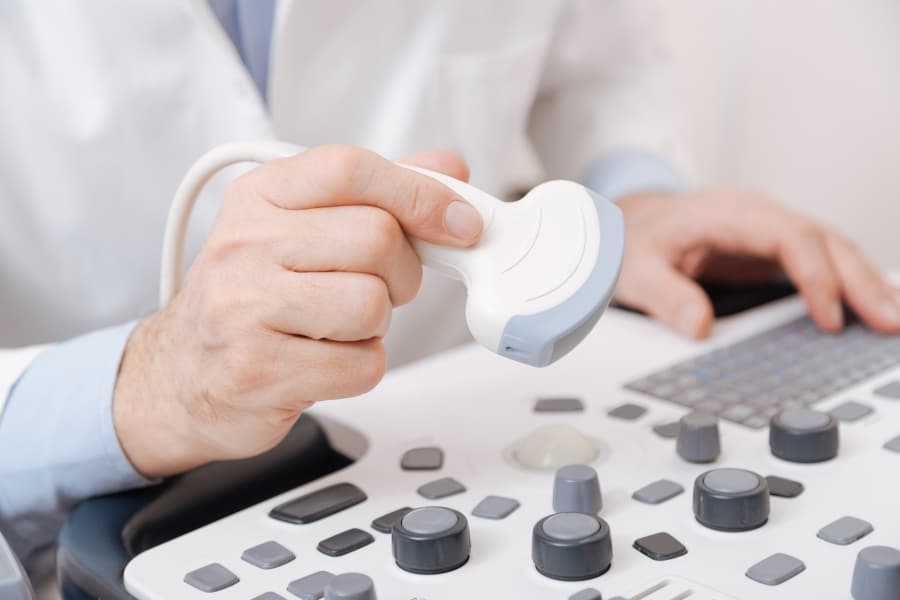Penile Echocolor Doppler
The dynamic penile echo-doppler is a second-level instrumental method proposed to quantify better the presence of a possible vascular component in the determinism of erectile disorder.
The initial excitement was slowly replaced by growing skepticism. This was because there were no standard stimulation protocols, the method was fairly invasive, and different people had different ideas about how to read the flow indices.
The most frequent approach involves sampling the cavernous arteries in basal conditions and after injection of a standard dose of PGE1 (10 g) every 5 for at least 20.
The most considered parameters are:
- The peak systolic speed after PGE1 (Vpsmax): A value of > 25-30 cm/sec is usually used as a standard threshold for what concerns the possible presence of an arterial component;
- Acceleration and tele-diastolic speed (VDs): a value of 5 cm/sec is considered a good index of the efficiency of the veno-occlusive system.
Beyond these general considerations, however, it is important to underline that in reality, penile echocolor-doppler also represents a highly operator-dependent method, which maintains the intrinsic specificity limits of the test with PGE1. Anxiety can be responsible for an adrenergic hypertonus, resulting in incomplete relaxation of the smooth muscle fibres of the corpora cavernosa, which can affect, in the first instance, a deficit of the veno-occlusion systems. Therefore, in pathological responses to venous or mixed components, especially in young subjects and in the absence of risk factors for CV diseases, the result must be well evaluated for a possible psychogenic element that does not allow adequate relaxation of the corpora cavernosa.

Flowmeters for the diagnosis of ED on an arteriogenic basis.

Similarly to the criticisms reported regarding the predictive role of RV, it must be recognised that comparative studies between penile flowmetry evaluation after the pharmacological stimulus and selective pudendal angiography or ultrasound evaluation of the intima-media thickness of the common carotid artery also showed poor sensitivity of the indices.
However, more recent studies within our group seem to re-evaluate this method, emphasising a possible role in stratifying the CV risk of patients with ED.
Longitudinal data on over 1600 ED patients demonstrates that Vps after PGE1 25 cm/sec doubles the chance of having a CV event after a mean follow-up of 4.4 years. Not only that, but more recent studies show that the simple evaluation of penile flows performed in conditions of flaccidity (before the administration of PGE-1) and, in particular, of acceleration represents even more efficient markers of the dynamic parameters, especially in subjects with low risk. Since these studies are just starting out, it's important to remember that the role of penile assessment in flaccid conditions is still being talked about.







